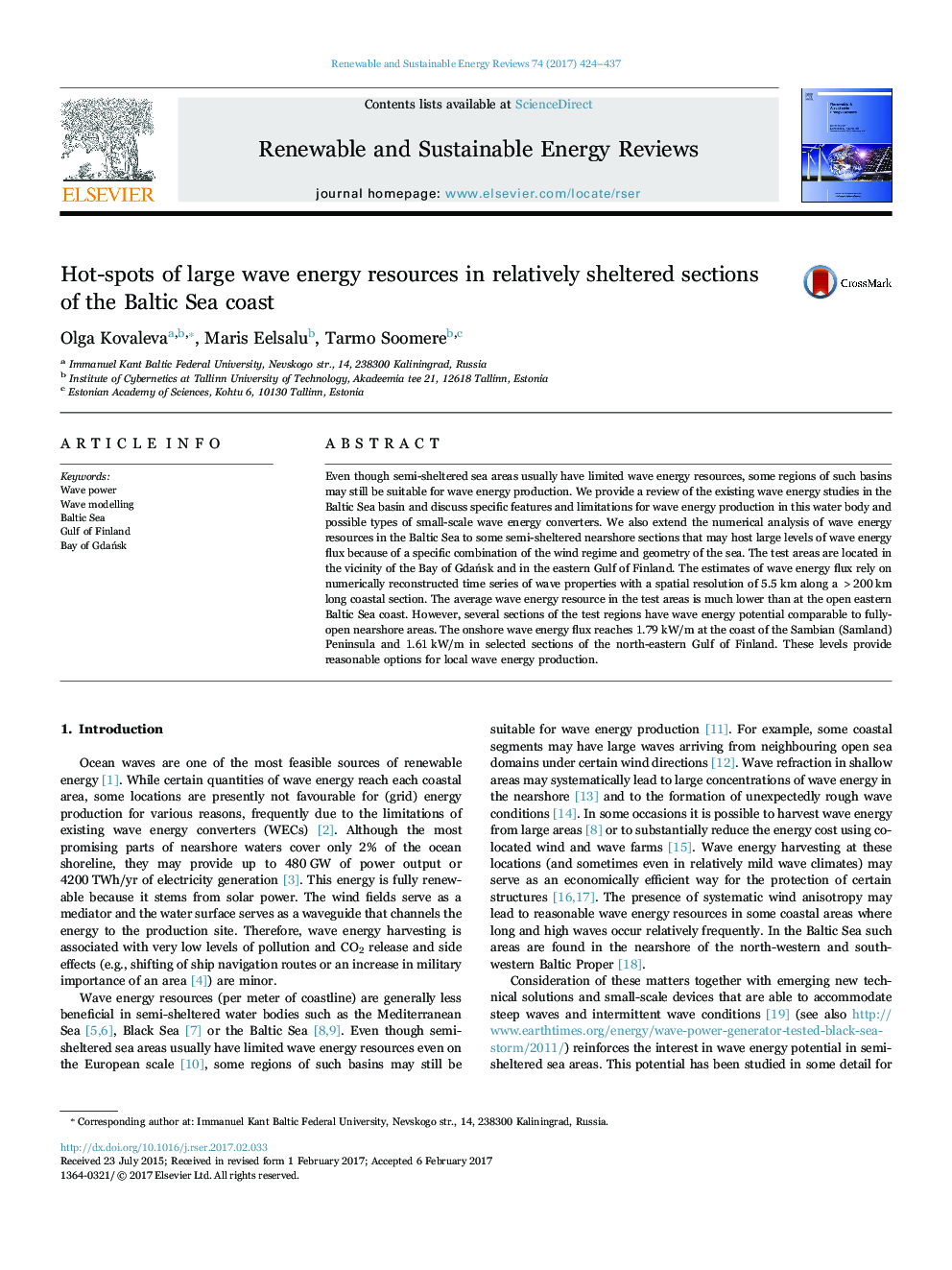| Article ID | Journal | Published Year | Pages | File Type |
|---|---|---|---|---|
| 5483133 | Renewable and Sustainable Energy Reviews | 2017 | 14 Pages |
Abstract
Even though semi-sheltered sea areas usually have limited wave energy resources, some regions of such basins may still be suitable for wave energy production. We provide a review of the existing wave energy studies in the Baltic Sea basin and discuss specific features and limitations for wave energy production in this water body and possible types of small-scale wave energy converters. We also extend the numerical analysis of wave energy resources in the Baltic Sea to some semi-sheltered nearshore sections that may host large levels of wave energy flux because of a specific combination of the wind regime and geometry of the sea. The test areas are located in the vicinity of the Bay of GdaÅsk and in the eastern Gulf of Finland. The estimates of wave energy flux rely on numerically reconstructed time series of wave properties with a spatial resolution of 5.5Â km along a >200Â km long coastal section. The average wave energy resource in the test areas is much lower than at the open eastern Baltic Sea coast. However, several sections of the test regions have wave energy potential comparable to fully-open nearshore areas. The onshore wave energy flux reaches 1.79Â kW/m at the coast of the Sambian (Samland) Peninsula and 1.61Â kW/m in selected sections of the north-eastern Gulf of Finland. These levels provide reasonable options for local wave energy production.
Related Topics
Physical Sciences and Engineering
Energy
Renewable Energy, Sustainability and the Environment
Authors
Olga Kovaleva, Maris Eelsalu, Tarmo Soomere,
